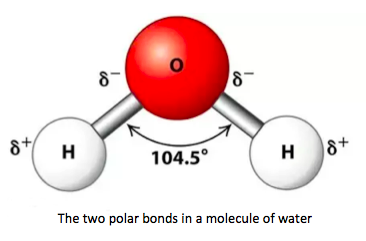4.2 Covalent bonding
Written specifically for students to provide help and support for the IB Diploma chemistry programme this page provides full coverage of the syllabus content of Topic 4.2 Covalent bonding. It encourages you to think critically and provides many questions with full worked answers so that you can monitor and improve your knowledge and understanding.


 Learning outcomes
Learning outcomes
After studying this topic you should be able to:
 Understand:
Understand:
- Covalent bonds are formed by the electrostatic attraction between shared pairs of electrons and the positively charged nuclei on either side of the electrons.
- Single, double and triple covalent bonds involve one, two and three shared pairs of electrons respectively.
- Bond strength increases and bond length decreases as the number of shared pairs of electrons increases.
- Bond polarity is due to the difference in the electronegativities of the bonded atoms.
Apply your knowledge to:
- Deduce the polar nature of a covalent bond using electronegativity values.
Relationships & vocabulary
Nature of science
Trends and discrepancies - compounds containing only non-metals have different properties than compounds that contain both non-metals and metals.
Natural phenomena can be explained by using theories. For example, Gilbert Lewis introduced a class of compounds which share electrons. Linus Pauling used the idea of electronegativity to explain the unequal sharing of electrons in certain compounds.
International-mindedness
For examples and links to International mindedness, Theory of knowledge, utilization etc. see separate page which covers all of Topics 4 & 14: Chemical bonding & structure.
Vocabulary
| covalent bond | multiple bond | bond strength |
| bond length | electronegativity | polarity (polar bond) |
Learning slides
You can use this slide gallery for learning or for reviewing concepts and information. It covers all the key points in the syllabus for this sub-topic.
Something to think about
The IB uses Pauling’s scale of electronegativity. It was Linus Pauling who first proposed the idea that the bonding electrons pair between two different atoms is not shared equally. If the electrons are in the same outer electron energy level in both atoms then they will tend to be closer to the atom with the greater number of protons in the nucleus resulting in a polar bond. Similarly the closer the outer electron energy level is to the nucleus then the greater the electronegativity. Thus fluorine is the most electronegative element of all. Pauling’s scale was first proposed in 1932 and is a relative scale so has no units.
In 1934 Robert Mulliken (of the ‘oil drop experiment’ fame) proposed that electronegativity could be measured as a quantitative value measured in kJ mol-1. He arrived at the value by taking the arithmetic mean of the absolute values (i.e. ignoring the + or – sign) for the first ionization energy and the electron affinity of an element. You could use Section 8 of the IB data booklet to work out values based on this relationship. For example:

It is an interesting exercise to convert these to the Pauling scale by using the fact that fluorine (1005 kJ mol−1) is equivalent to 4.0 on the Pauling scale. By scaling the other values chlorine (800 kJ mol−1) becomes 800/1005 x 4.0 = 3.2, bromine becomes 733/1005 x 4.0 = 2.9 and by doing similar calculations hydrogen becomes 2.7 and sodium becomes 1.1. These values do compare quite well with Pauling’s scale F (4.0), Cl (3.2), Br (3.0), H (2.2) and Na (0.9). Milliken’s absolute scale is not often used, partly because the electron affinities of some elements are not well-known. Even so perhaps it is worth realising that there is an absolute scale as well as Pauling’s relative scale. Maybe this could provide some fertile ground for a non-experimental individual scientific investigation for your IA?
Test your understanding of this topic
(Note that your teacher may have restricted your access to some or all of these questions and worked answers if they are going to use them as a class test or set them as an assignment.)
For ten 'quiz' multiple choice questions with the answers explained see MC test: Covalent bonding.
For short-answer questions see Covalent bonding questions.
More resources
1. A simple but rather good tutorial with a few animations produced by the BBC that might be worth looking at, particularly if you are a Standard Level student.
2. A good video explaining polar bonds and also polar (e.g. H2O and NH3) and non-polar molecules (e.g. CO2 and CCl4).

 IB Docs (2) Team
IB Docs (2) Team 


















